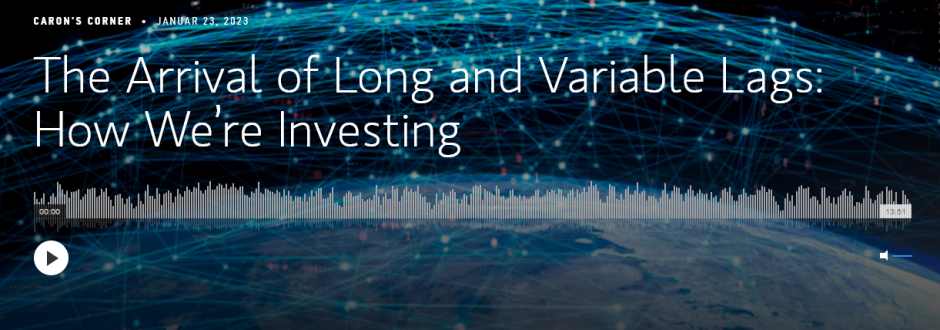
Morgan Stanley IM: The Arrival of Long and Variable Lags: How We’re Investing
Morgan Stanley IM: The Arrival of Long and Variable Lags: How We’re Investing
Fixed Income
Jim Caron, Co-Lead Global Portfolio Manager and Co-Chief Investment Officer, Global Balanced Risk Control Team, shares his macro thematic views on key market drivers.
25.01.2023 | 10:36 Uhr
- We expect the release of new economic data to be wide, varied and somewhat asynchronous.
- Said differently, the arrival of long and variable lags from the rapid pace of policy tightening will now have an effect on market data releases.
- This may lead to higher volatility as the market is apt to change its mind frequently on which tail risks it wants to latch onto. This happens when tail risks are fat, as they are in 2023.
- Beyond this, a key Fed mouthpiece signaled a 25 basis point Fed hike at the Feb 1 meeting, and maybe one more in March, pushing everyone toward the left-tail. No wonder volatility is high!
- This combination of fat-tail risks and sizeable amounts of money on the sidelines will make managing risks particularly difficult in 2023.
- Adding to the difficulties is that return correlations between fixed income and equities are still very high, which makes it mathematically challenging for traditional portfolio management techniques (e.g. 60 Equity/40 Fixed Income) to reduce risk.
- The key to managing this type of volatility, the distribution of market risks, is to construct a portfolio of offsetting risks and achieve diversification, or risk reduction, through this balance.





Diesen Beitrag teilen: